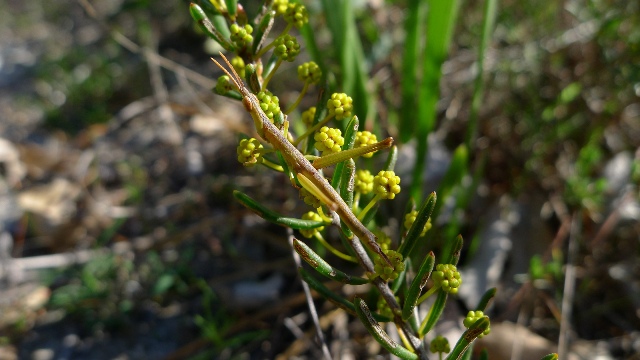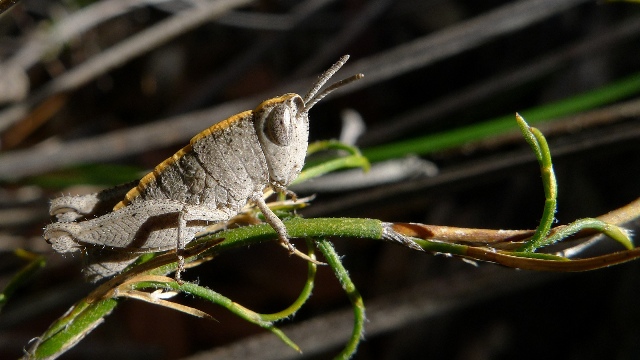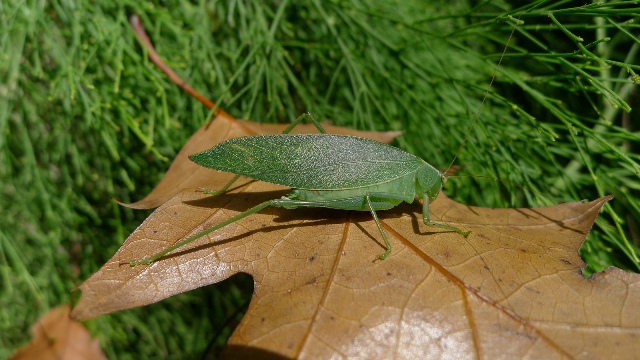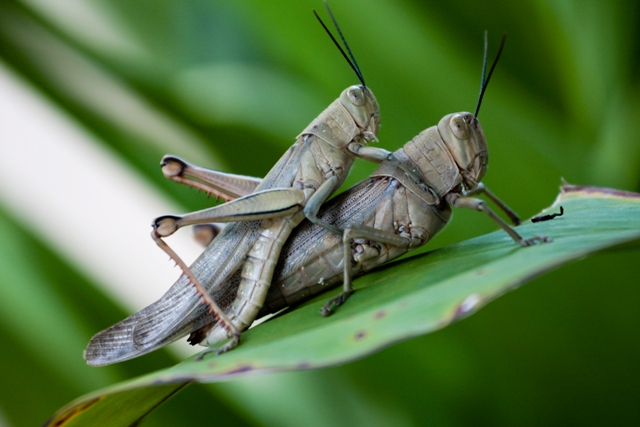Phylum Arthropoda
Subphylum Hexapoda
Class Insecta
Order Orthoptera
Common names: grasshoppers, locusts, crickets, katydids
Overview
Orthoptera are insects typically recognised by their enlarged hind legs. They are often seen jumping away when disturbed or heard 'singing' at night. Some burrowing species have legs of similar sizes with spiny fore legs modified for digging. The group have mandibulate (chewing) mouthparts, large compound eyes and their antennae vary in length depending on the species with grasshoppers having relatively short antennae and crickets and katydids generally having long antennae. Orthoptera also have the first segment of their thorax covered by a large plate (the pronotum) that extends down the side of their body, and two pairs of wings with narrower forewings that are hardened at the base and membranous hindwings that are folded fan-like under the forewings when at rest. Several species are wingless (apterous) or have reduced wings (brachypterous). Orthoptera range in length from 5�100 mm and can display diverse colours and patterns, often mimicking their microhabitat.
Distribution and diversity
Orthoptera occur in all terrestrial habitats across Australia. They are most diverse in the tropics, but considerable numbers of species live in temperate eucalyptus forests, scrublands and heathland. More than 20,000 species are known worldwide. The fauna of Australia comprises 1,835 described species in 432 genera, and 20 families, but the true number of species is considered to be around 3,000.
Life cycle
Courtship in many species involves production of sound by the males; they rub their legs, wings or abdomen together (stridulate) to attract females. Sperm transfer is direct. Typically females lay clutches of eggs in the ground, on vegetation or into plant tissue. Nymphs look like small wingless adults. In winged species, the nymphs develop wings buds through successive moults (6�10) until the final moult at which the fully developed wings are expanded. Growth rate is variable and may take anywhere from a few weeks to many months, depending on factors such as food availability and temperature.
Feeding
Most orthopterans are herbivorous and feed on a variety of plant material including leaves, stems pollen, nectar, seeds, fruits, roots, lichens and mosses. Some species are scavengers on animal and plant debris, or predators of other insects; predatory orthopterans use their forelegs to hold on to their prey. Most grasshoppers feed on grasses and forbs, but many katydids and crickets tend to be more omnivorous.
Ecology
Orthopterans are commonly found in association with vegetation, from ground level to the canopy, in burrows in the soil or on open ground. Many crickets and katydids tend to be nocturnal; grasshoppers and locusts are primarily active during the day (diurnal). Others, such as mole crickets spend most of their time in underground burrows; some species live in caves. Many species are generally well camouflaged, using behaviour and/or cryptic colouration patterns and special body forms involving mimicry of leaves, twigs, bark and other vegetation or sand or rocks. When disturbed, orthopterans usually jump, run quickly for cover, or jump into flight; they usually land after only a short distance. Some remain stationary or burrow, others have threatening displays, including flashing warning colours, or make a noise with their wings. Orthopterans are usually found alone or in small numbers. However, a few species, such as the Australian plague locust (Chortoicetes terminifera), can rapidly increase in numbers when conditions are suitable, forming plagues that sometimes migrate considerable distances and cause significant economic damage to crops and pastures.
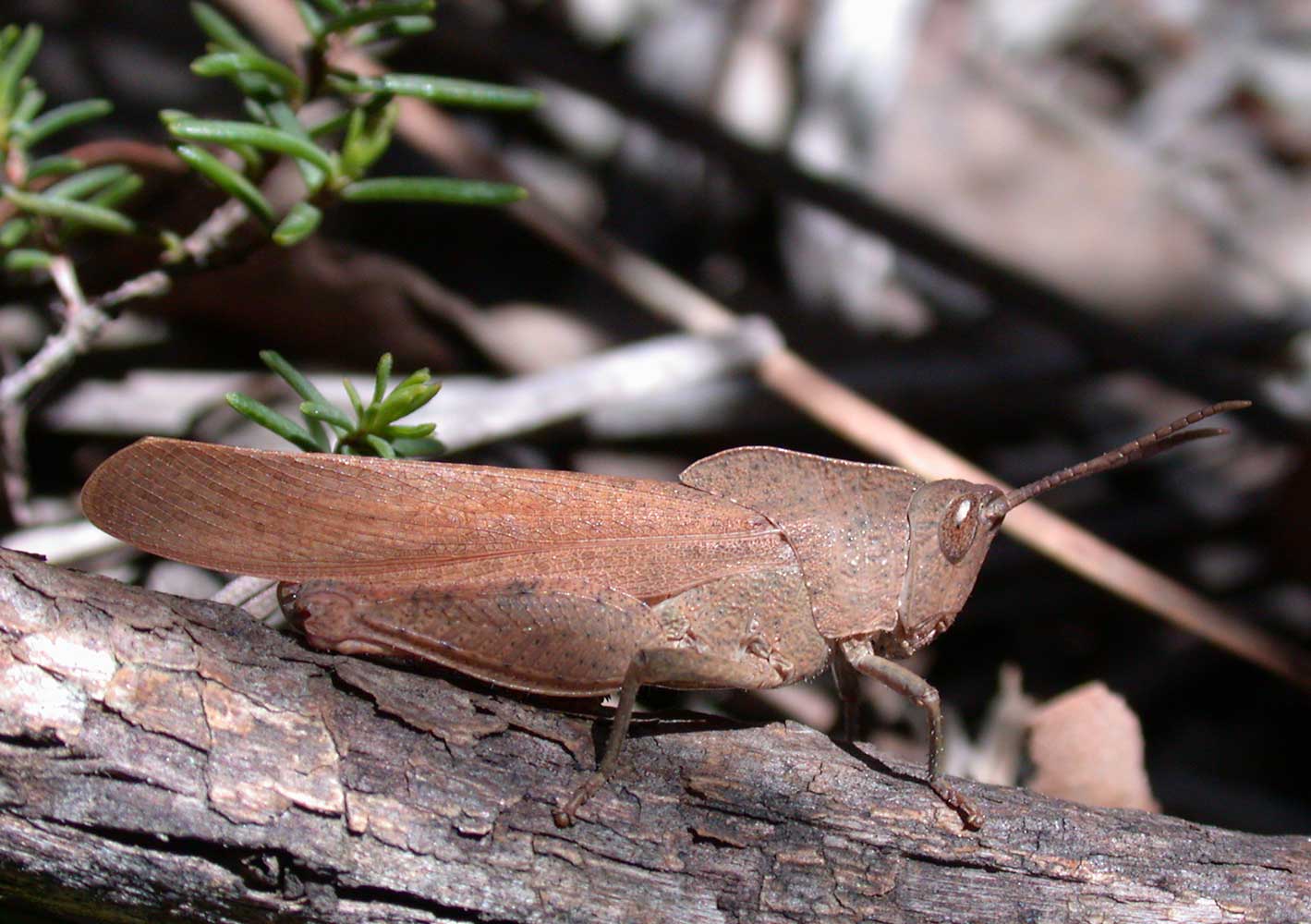
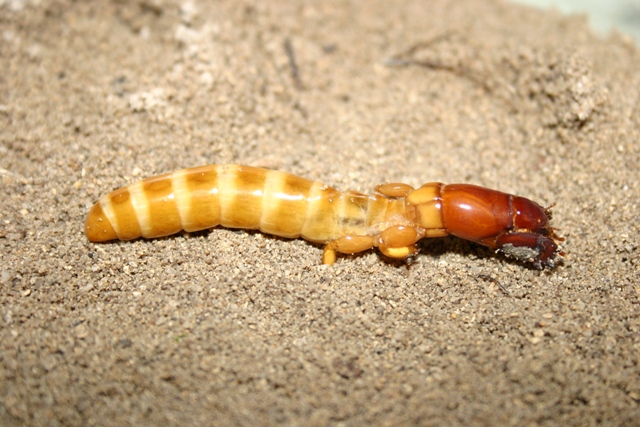
Cylindrochaeta
Image credit: Photographer: Mark Harvey
� Western Australian Museum

